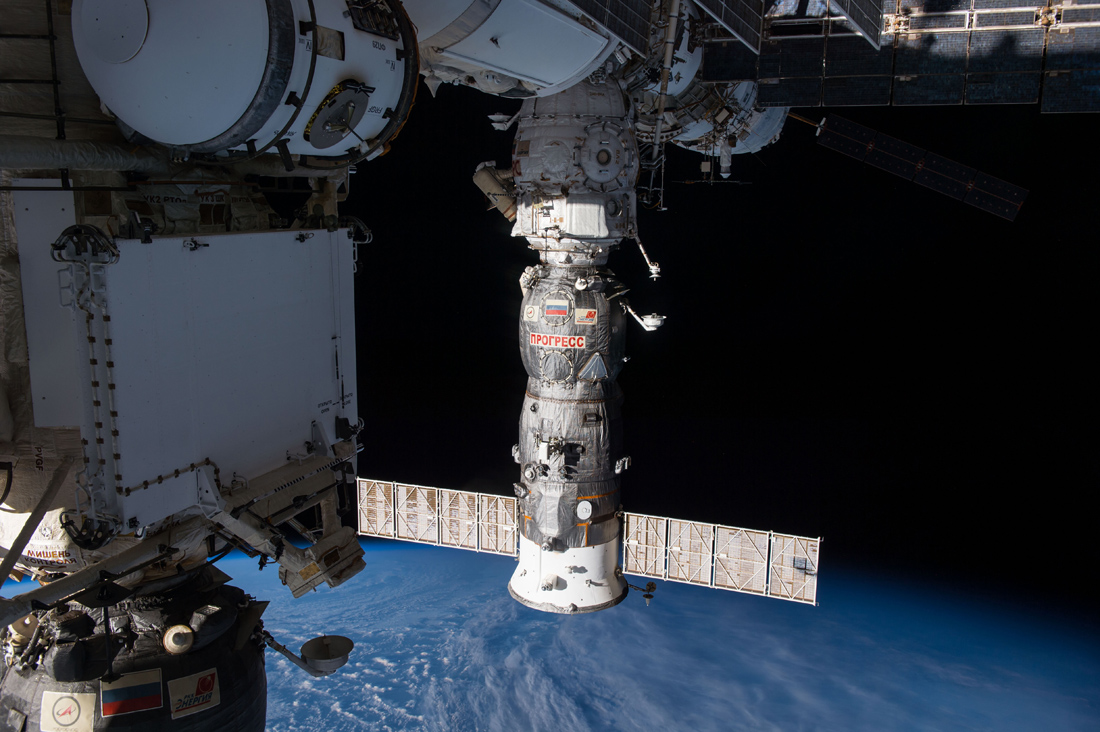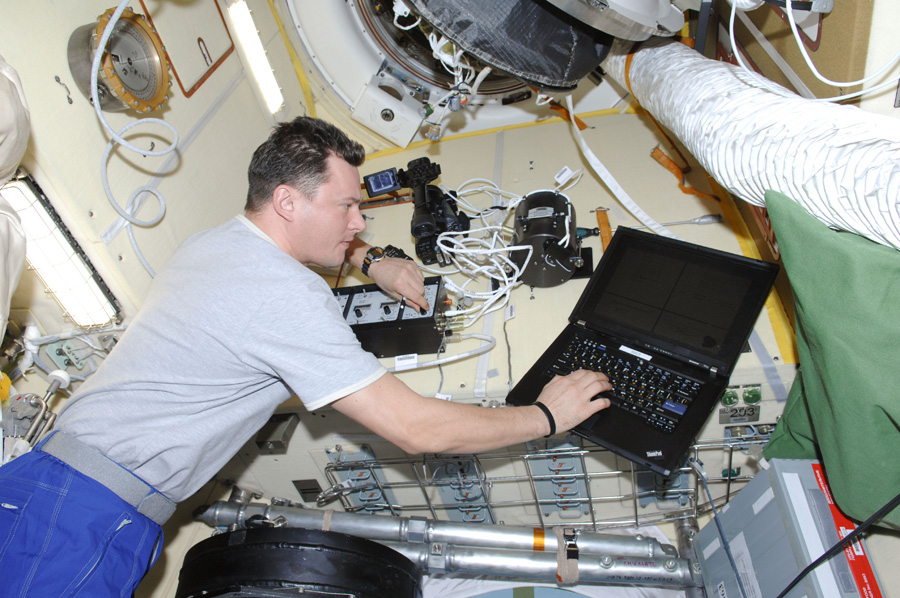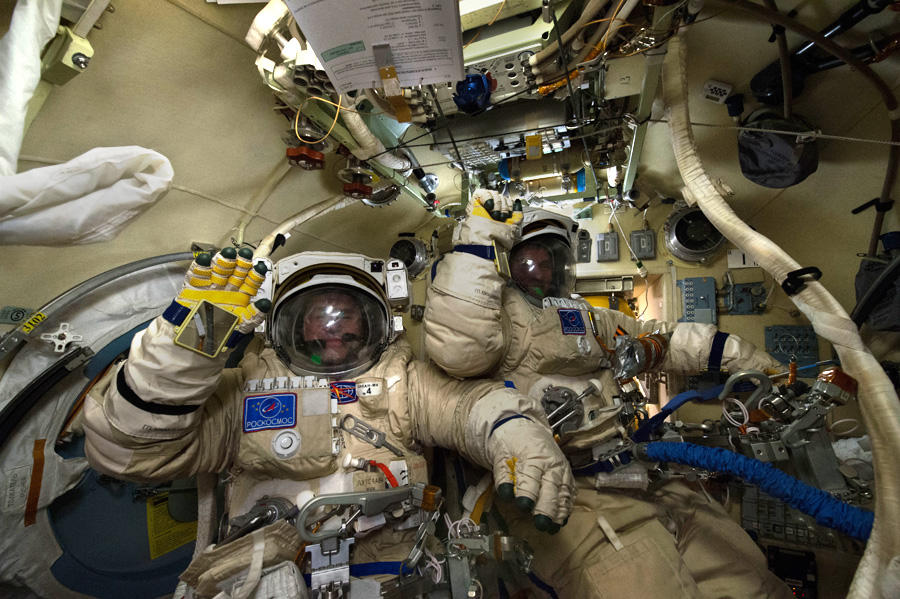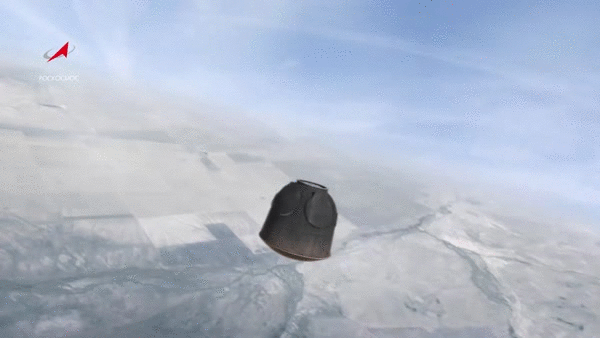Progress in the press service of Roskosmos

I have repeatedly dealt with the topic of popularization and PR of the cosmos , and have repeatedly discussed the activities of the press service of Roskosmos. Compared to the work of PR agencies of space agencies in other countries, our work leaves much to be desired, but a simple comparison is illegal - everyone has different budgets, different numbers, different traditions of working with information, different laws of its distribution. Therefore, I want to make a small review of the positive changes in the work of Roscosmos PR managers. There are changes for the better, although they are not so noticeable against the background of other agencies.
The reason for this analysis was another criticism of the work of the press service of Roskosmos from a colleague, a blogger and a popularizer />. He recently complained that in the Russian popular science magazine “Schrödinger's Cat” , in the article about the ISS annual expedition , not a single photo from the Russian segment was posted - everything is entirely from the US, as if the station consists only of it. The reason for this selection of illustrations seems simple: on the NASA website, it is much easier to find large-format images suitable for glossy printing than on the Roscosmos website. Although, it is quite possible that the editorial board of the journal did not even set such a goal - to show different segments of the station. The author of the material is Alfiya Maksutova, a good journalist, she once wrote about a private space program, but she is far from astronautics, therefore for specialists her texts seem superficial and erroneous in some details.
Obviously, neither the photo editor nor the “Kota” journalist will distinguish the Russian segment from the American one from the photographs, so they chose from what was on hand on the NASA website. At the same time, the Space Center. L. Johnson NASA has a large photo archive on Flickr , where, if desired, you can find pictures from the Russian part of the station. There is also an abundance of personnel from the Cosmonaut Training Center in Star City, from Baikonur and even from the walls of the Kremlin.
')

It is possible to distinguish the Russian segment of the ISS from the others by appearance - the Russian interiors are closer, have yellow, beige and green shades.



American, European and Japanese modules are much more spacious and have more white, blue, blue and pink.

If there is a difficulty in determining the accessories, you can look at the picture in the maximum resolution and read the inscriptions on the equipment.

And the easiest way to look at the caption to the photo, they usually write there who is in the photo, where and what they are doing.

Roskosmos also has its own page on Flickr and from it we will begin the list of positive changes in the work of the press service that have occurred in the last couple of years.
The Russian Flickr was opened back in 2012, but for three years only eleven photos from the ISS were posted there. More actively fill it began in 2015. Now there is the last update at the end of October 2016 - the landing of the Soyuz MS-01 spacecraft. The size of the photo archive is not comparable with NASA, but I suspect that not many people know about ours.

Roscosmos has socially developed pages on Facebook , Instagram , Vkontakte , Twitter . They appeared in 2014. In Vkontakte, a few years before this, the Roscosmos page was run by enthusiasts, and then transferred admin rights to representatives of the press service. Since the founding of the pages, the practice of working with them has changed significantly. If at first it was just a copy of the news feed from the official site, now separate messages have been added for users: photos from the ISS, and even the popularization of astronomy.
Together with the Moscow Planetarium, announcements of interesting astronomical events are published under the hashtag #Astronomy For All: meteor showers, solar and lunar eclipses, spans of the ISS. It is true that there are occasional oddities, such as a warning about a solar eclipse in Madagascar, but on the whole the undertaking is positive.
Roscosmos even supported, initiated by Planetarium, an online vote for the return of astronomy to schools. According to my observations, this is the first, for Roskosmos, an attempt to lobby its interests with an appeal to the public.
Separately, I would like to note the triumph of SMM in the development of the Roskosmos format. Gif and its use in social networks. The art of loading gifs in the VC was mastered far from immediately, but now we are pleased with the animation during the launch of rockets and landings of space ships.

It turned out that Roscosmos could also be in viral videos. Officially, of course, no one admits that this video was downloaded on purpose. But if it is an illegal drain, then the merged one must be found, caught up and rewarded.
Although I would recommend watching the entire video in order to fully experience the atmosphere of space flight.
Even some cosmonauts came to the social network. For example, Oleg Artemyev has 200 thousand subscribers to his Instagram. He has a very cool website with a rich photo selection.
The active user of Vkontakte cosmonaut Sergey Volkov , he began to keep the page directly from the ISS in 2015.
Cosmonaut Alexander Misurkin is preparing for his second flight and talks about the preparation on his pages on Facebook and Vkontakte . During our meeting at the Museum of Cosmonautics, he shared that he was leading pages in his spare time, and the main motive for him was the opportunity to convince readers that astronauts are not born, and anyone can pursue his dream.
Test cosmonaut Sergei Kud-Sverchkov maintains his blog , although in 2016 he published only one entry, which is probably not an easy task to prepare for his first flight.
For those who are interested in the creation of promising space technology, the blog of Mark Serov , a test cosmonaut, head of the flight test department of RSC Energia, may be interesting. His blog is the richest source of invaluable experience in developing the Federation spacecraft and the planned lunar program.
There are blogs of astronauts and Roscosmos website .
I think the activities in social networks, all the astronauts are independently, and the merit of the press service is that they have such an opportunity - no one interferes with this. Considering the traditional closeness of our cosmonautics and the conviction of the majority of bosses that all activity is secret, such a blank check for popularization is an important achievement in opening Roscosmos to the public.
According to the information coverage of rocket launches, Roskosmos is also slowly moving forward. Live broadcasts have long been, even despite the known setbacks. The first launch from the Vostochny cosmodrome was accompanied by the installation on the rocket of the so-called “rocket launchers” - cameras located on board the rocket.
The Rockettries have long been established by the American company SpaceX, and they are letting video from them live. China is not lagging behind, they gave live broadcasts from the rocket trains, from a test launch of their heavy rocket. Roskosmos does not dare to such a thing, although there is a technical possibility, but the record is a step forward, because it was necessary not only to get the permission of the leadership, but also to carry out the technical development of the rocket to accommodate the cameras and the data transmission system. And the modernization of the rocket, even such a minor one, is not an easy task for our conservative industry, from the bureaucratic side.
Pleasant trifles are sometimes added to the broadcast of rocket launches: the cosmonaut talks with the MCC, the music that plays in the ship. But a long time ago there was a need to accompany the launches with professional comments. It’s just that the pictures from the cosmodrome are not enough, the leaders and experts are needed, who will be able to keep the viewer at the screen, tell about the essence of what is happening, tell interesting facts about the upcoming launch. It got to the point that amateur enthusiasts began to conduct their broadcasts , where they gave comments to the best of their understanding. Finally, Roscosmos Television realized this need and did a serious job in covering the launch of the Soyuz MS-02 spacecraft.
The previous launch was also shown well, adding information about the flight and the timeline - the line on which the main stages of the rocket’s flight are indicated. This would seem a trifle, but it is also a step forward.

It is impossible to pass by a fresh gift to all space enthusiasts of the “Cosmos 360” project.
In terms of working with the media, it became better too. An active mailing list of all industry news directly from Roskosmos and enterprises has been established. You can subscribe to it by sending a request to press@roscosmos.ru
But for the press it is more important not to receive a letter on the general list, but an operational comment on a specific topic. Previously, it was almost impossible, so the press used nameless "sources in the rocket and space industry." Now there are also a lot of them, and the employees of the industry still do not want to comment under their own name, but now you can at least hear the words of the director of the communications department of Roscosmos. His status allows direct interaction with the press, whereas before the reform, the spokesman did not have the opportunity to speak on his own behalf.
In general, the increase in the press service to a separate department significantly increased the opportunities for communication with the industry. After all, the pursuit of closeness, still coming from the Soviet Union, did not disappear in our cosmonautics. Little by little, things are changing, and international projects contribute to this, but all the same, most experts are ready to work behind a high concrete fence in peace and quiet. Therefore, the press service of Roskosmos has to work not only in conditions of constant competition with the "superior opponent", but also overcoming the half-century inertia of the industry.
The result of the press service can be called and the preservation of the journal "News of astronautics . " A year ago, its editor and founder Igor Marinin was ready to give a magazine for 1 ruble to anyone who would ensure the continuation of his life and work. Roscosmos heard a cry for help, and now the magazine continues to work, remaining the most objective and informative means of information about world cosmonautics in Russian. Now, by the way, there is a subscription for 2017 .
Of course, the list of what needs to be done is much more than what has already been done to popularize the cosmos and Roscosmos in Russia and the world. Everyone can offer something of their own. For example, I will say that Roscosmos has already learned quite well how to talk about current activities, and now it’s time to learn to talk more about successes and results. The five years of “Radioastron” were noted very sparingly, silence about “Lomonosov” for six months, and “Electro-L 2” that flew a year ago sent only a few photos, when the previous one sent hundreds of shots per day. Apparently the place of the scientific editor of the news in the press service is still vacant.
And in case of failures, Roskosmos must learn to maintain the courage to admit mistakes, and to explain what is happening with the greatest possible openness.
Source: https://habr.com/ru/post/399639/
All Articles